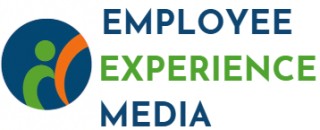What is an Accelerated Development Program?
Understanding the Concept of Accelerated Development Programs
Accelerated Development Programs (ADPs) are specially designed initiatives within organizations aimed at swiftly advancing the skills and capabilities of high-potential employees. These programs focus on providing intensive training, learning experiences, and exposure to leadership roles, all of which are essential for shaping future business leaders.
The core objective of an ADP is to prepare employees for leadership positions by equipping them with the necessary skills and experience in a shorter time frame than traditional career progression would allow. By doing so, organizations can build a strong internal pipeline of talent, ready to take on future challenges and meet organizational goals.
An ADP revolves around a structured development plan that incorporates a blend of learning methods, including formal training, on-the-job learning, mentorship, and coaching. Providing an integrated approach enables employees to develop both their technical and soft skills, which are essential for effective leadership. An emphasis on continuous learning and feedback ensures the development programs remain adaptable to the evolving business landscape.
For businesses, investing in ADPs can significantly enhance organizational performance. By fostering an environment that promotes employee growth and leadership development, companies can secure a competitive edge. Contactless resource allocation and skill optimization further align with strategic objectives, ensuring that talent management is seamless and productive.
Enhancing employee experience through effective talent management is pivotal in today's fast-paced corporate world, underpinning the significance of accelerated development initiatives.
Key Components of an Effective Program
Essential Elements for a Strong Development Program
Crafting an effective accelerated development program, or ADP, hinges on integrating key components that promote learning and leadership advancement. To ensure an impactful program, organizations need to focus on both design and implementation. This means going beyond traditional training methods and fostering an environment conducive to growth and employee development.
One of the foundational cornerstones of a successful development program is a tailored development plan. This involves identifying the high potential employees who are most likely to progress into leadership roles. A strategic plan aligns with individual career goals while supporting broader business objectives. By setting clear and achievable development goals, employees can see a direct link between their efforts and career growth.
Robust training and continuous learning opportunities are crucial to developing future leaders and improving employee performance. This can involve workshops or courses aimed at building both technical and soft skills. Ongoing feedback and assessment help manage performance, providing employees with direction and motivation.
Mentoring and coaching opportunities further enhance the program by offering personalized support and guidance. Pairing less experienced employees with established leaders can facilitate accelerated learning. Such mentorship relationships are pivotal, as they help employees navigate challenges and refine their leadership skills. For a deeper dive into leveraging mentorship as part of your strategy, check out
enhancing employee experience with mentorship programs.
Furthermore, fostering a culture that encourages open communication and feedback is valuable for both managers and employees. This approach promotes transparency and trust, essential components for any development program aimed at long-term success.
Lastly, successful accelerated development programs are supported by technology that aids in monitoring progress and adapting to changing business needs. Investing in tools that track employee progress and facilitate learning can streamline the program, making it more effective and easier to manage.
Creating a development culture focused on leadership development, skill acquisition, and continuous career growth ensures that both employees and the organization achieve their potential. While there are challenges in implementing such programs, which will be discussed later in the article, the benefits far outweigh the hurdles.
Benefits for Employees and Organizations
Benefits for Employees and Organizations
Accelerated Development Programs (ADPs) offer significant advantages to both employees and organizations. For employees, these programs provide a structured pathway to enhance their skills and leadership capabilities. By participating in such programs, employees can accelerate their career goals, advance their learning, and gain exposure to leadership roles at a much faster pace compared to traditional training methods.
Key Benefits for Employees:
- Skills Enhancement: ADPs focus on the holistic enhancement of both hard and soft skills, paving the way for well-rounded professionals.
- Fast-Track Career Growth: By immersing in accelerated leadership and development roles, employees witness quicker career advancement.
- Continuous Learning: These programs emphasize ongoing development, fostering a culture of continuous learning that aligns with personal career aspirations.
On the organizational front, ADPs can significantly augment overall business performance. They ensure that high potential employees are nurtured efficiently, reducing the time it takes for them to contribute meaningfully to the company's success.
Organizational Advantages:
- Leadership Pipeline: By preparing employees through robust leadership development, businesses maintain a steady pipeline of future leaders ready to tackle challenges effectively.
- Retention of Talent: Employees participating in such programs often exhibit higher levels of engagement and commitment, reducing turnover rates.
- Alignment with Business Goals: With a clear focus on aligning employee development plans with organizational strategies, ADPs ensure that development efforts are relevant and effective.
To craft an effective ADP, it is crucial for organizations to focus on creating a
personalized employee experience that recognizes the individual aspirations and needs of employees while supporting the broader objectives of the organization. In doing so, they lay the foundation for a thriving work environment where both employees and businesses can prosper.
Challenges in Implementing Accelerated Development Programs
Overcoming the Hurdles of Implementing ADPs
The path to integrating Accelerated Development Programs (ADPs) into an organization is not without its challenges. While the potential for enhancing employee skills and boosting business outcomes is substantial, several obstacles can arise during implementation. Understanding these hurdles and how to address them is crucial for a successful program.
One of the primary challenges is aligning the program with the organization’s business goals and leadership development objectives. Many organizations struggle to clearly define what they want to achieve through the ADP and how it correlates with their long-term objectives. Ensuring a strong connection between the program and the company's strategic goals can be complex but is essential for justifying the investment in accelerated learning and leadership development.
Another common issue is identifying high potential employees who will benefit most from an accelerated path. It requires a robust performance management system to evaluate and select individuals who possess the potential for substantial career growth and leadership roles. Without thoroughly understanding the employees’ current skills and career goals, the program might not yield the expected results, leading to a misallocation of resources.
Customization of the development plans is another hurdle. Designing an effective ADP involves creating personalized employee development experiences that cater to individual learning styles and career ambitions. Crafting a program that addresses the diverse needs of participants while maintaining consistency in learning outcomes can be a delicate balance, requiring continuous learning resources and ongoing adjustments.
The implementation of an ADP can also face resistance from within the organization. Employees and managers may be hesitant to embrace the changes, fearing disruption of the existing workflow or questioning the program’s efficacy. Clear communication about the program's benefits, both for individual career advancement and overall business performance, can help mitigate resistance.
Finally, the ongoing evaluation and refinement of an accelerated development program are vital yet challenging. Continuous assessment and feedback loops ensure the program remains relevant and effective, but maintaining these processes demands time and dedicated resources. The organization must be willing to invest in the long-term growth of its employees for sustainable success.
Overcoming these challenges requires careful planning, open communication, and a willingness to adapt. By doing so, organizations can maximize the impact of their ADPs, aiding in the development of leadership skills and fostering a thriving workplace environment.
Case Studies of Successful Programs
Examples of Accelerated Leadership and Learning Programs in Action
Successful implementation of accelerated development programs (ADPs) can significantly enhance both employee experience and organizational performance. Below, we explore some real-world instances where companies have effectively utilized these programs to nurture potential employees into promising leaders.
-
Tech Industry Fast Track: Leading firms in the tech sector have designed fast-track programs tailored for high potential individuals, aiming to cultivate essential leadership skills. Through comprehensive training modules focusing on soft skills, technical proficiencies, and strategic management, employees have experienced notable career growth. The success metrics often include improved retention rates and heightened employee engagement.
-
Retail Sector Leadership Initiative: In the retail industry, a renowned multinational implemented an ADP that focused on aligning career goals with company objectives. This program encompassed both continuous learning and hands-on experiences ensuring that participants are groomed for leadership roles. The program also offered mentorship and development plans, resulting in a new wave of dynamic managers within the organization.
-
Financial Services Growth Pathway: A leading financial institution developed a bespoke development path that emphasized enhancing soft skills alongside traditional management training. By concentrating on personal strengths and leadership development, the program fostered an environment conducive to long-term career advancements. Employees who participated saw significant career ambition realization and became key business leaders.
Such case studies demonstrate the pivotal role that well-structured accelerated development programs play in preparing employees for future leadership and management challenges. They highlight how these initiatives can drive both individual skills enhancement and organizational goals achievement, ensuring a thriving business environment.
Future Trends in Accelerated Development
The Evolution and Prospective Directions of Accelerated Development
The landscape of accelerated development programs is showing no signs of slowing down. As organizations continue to prioritize employee development and align with business goals, these programs are evolving to meet the challenges of a dynamic workplace.
One emerging trend is the emphasis on personalized development plans. With the recognition that each employee has unique career goals and development needs, organizations are tailoring accelerated development programs to accommodate individual aspirations and potential. By doing so, they ensure that employees feel valued and driven to achieve their leadership ambitions.
The integration of technology is another significant trend transforming these programs. From AI-driven learning platforms to interactive virtual training sessions, technology is redefining how employees acquire both leadership skills and soft skills. These technological advancements not only enhance the learning experience but also make continuous learning more accessible, allowing potential employees to fast track their leadership journeys.
With growing global collaboration, development programs are also incorporating cross-cultural training. This focus reflects the necessity for business leaders to manage diverse teams and navigate different cultural contexts. As a result, employees emerge from these programs with a broadened perspective, equipped for leadership roles on an international scale.
Moreover, there is a noticeable shift towards fostering a culture of mentorship within organizations. By embedding mentorship opportunities within accelerated development, there is a dual opportunity for career growth – mentors enhance their management skills while mentees benefit from firsthand insights and guidance.
In the long term, these shifts indicate that future programs will be more adaptable, inclusive, and oriented towards nurturing high potential leaders ready to tackle tomorrow’s challenges. As organizations navigate these changes, they demonstrate a commitment to not only the immediate performance of their employees but also their sustained growth within leadership positions.









